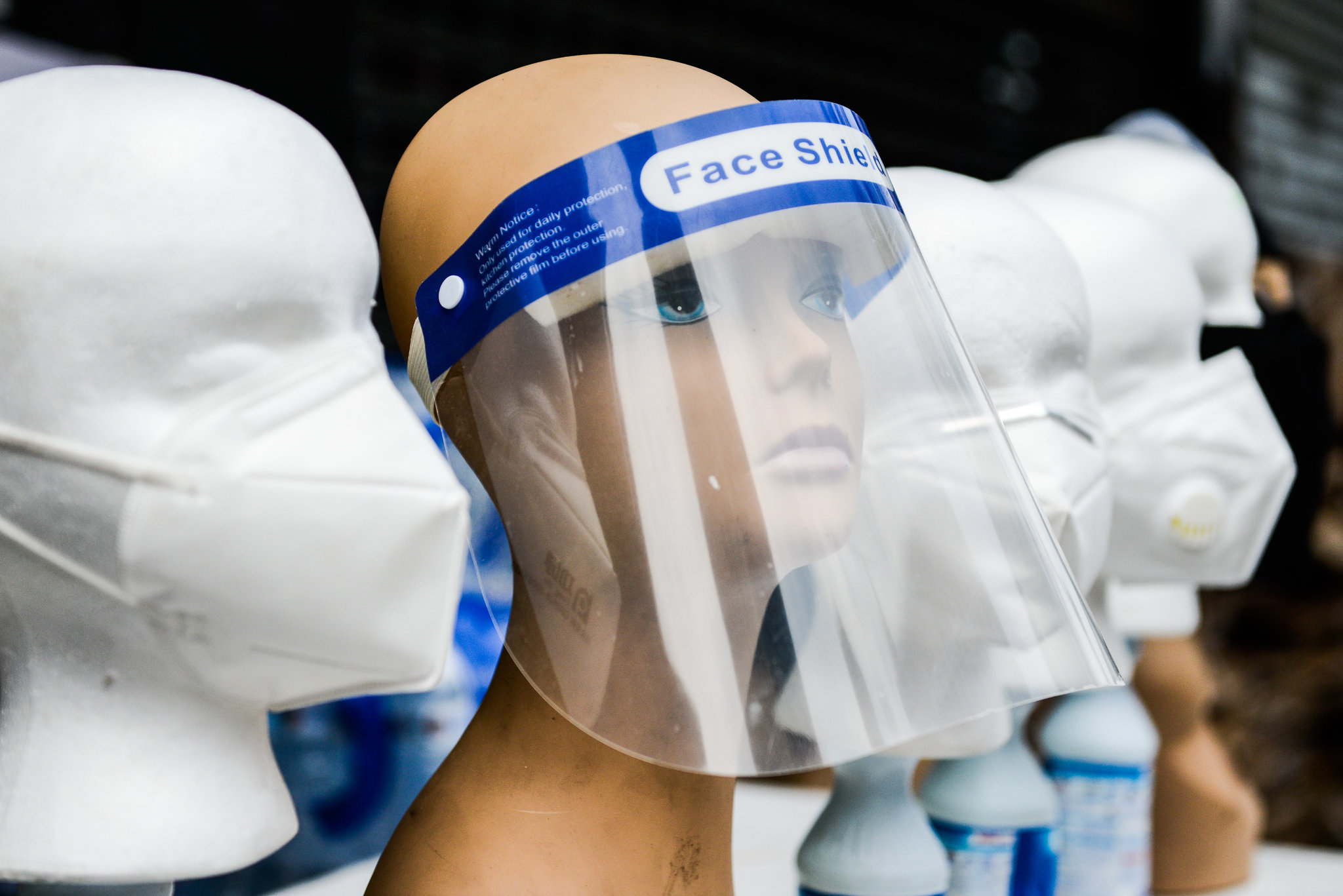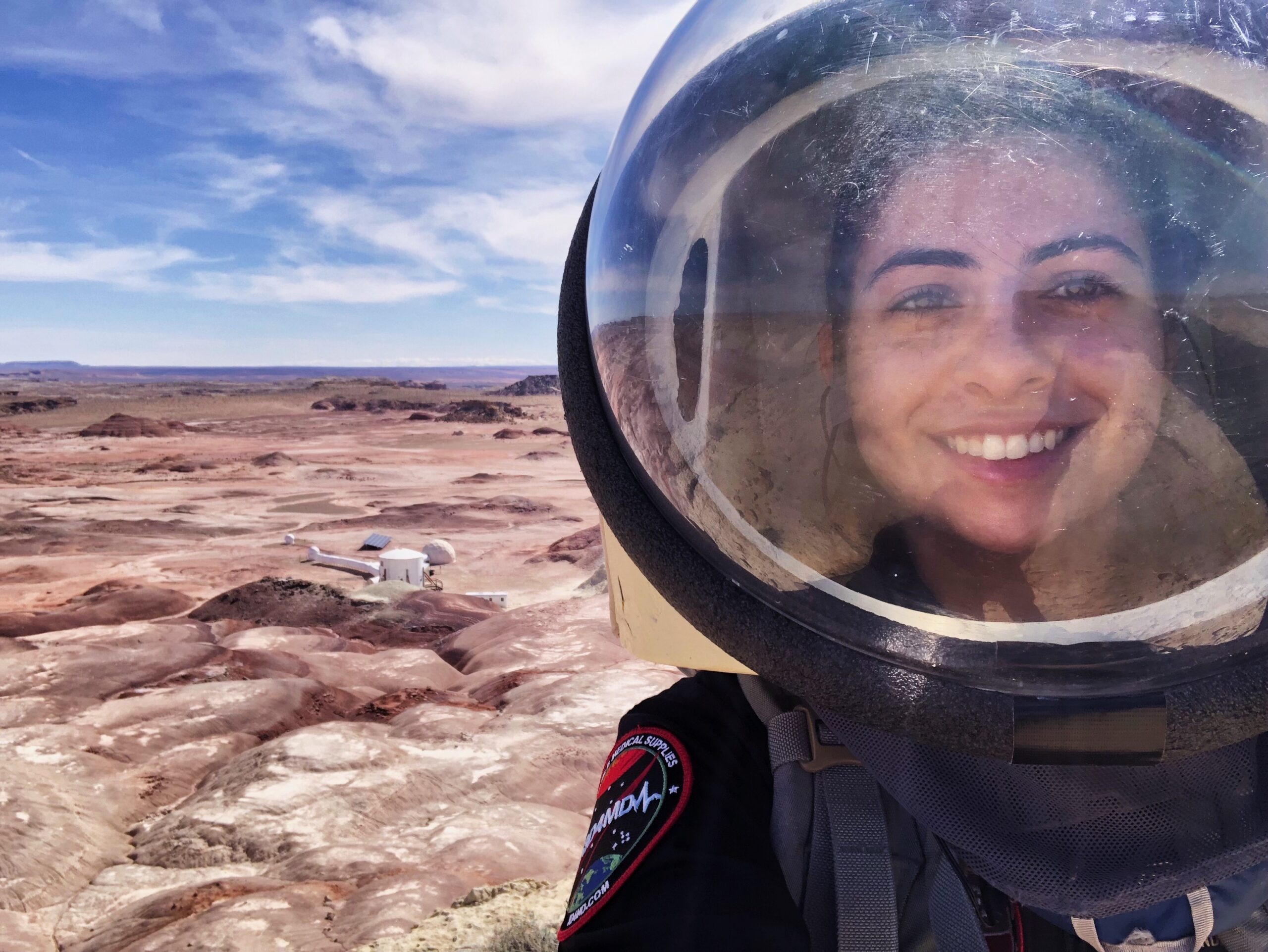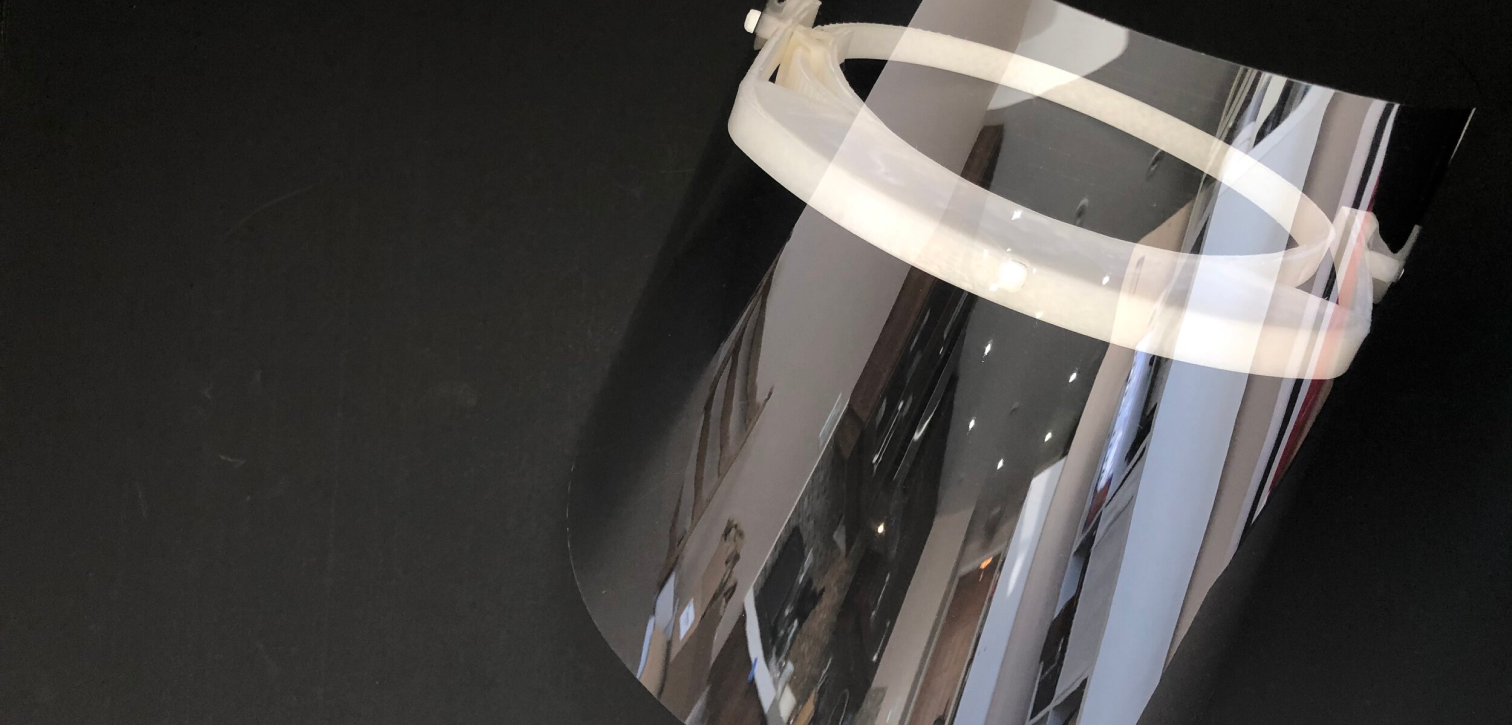

Design of a 100% Reusable Face Shield during COVID-19.
SUMMARY
During the peak of supply chain issues during COVID-19, myself and some fellow Medical Makers came together to design, develop and distribute a 100% reusable face shield solution for healthcare workers.
My role: Medical Makers Volunteer Engineer; materials sourcing and molding expert
Timeline: 2020-2021
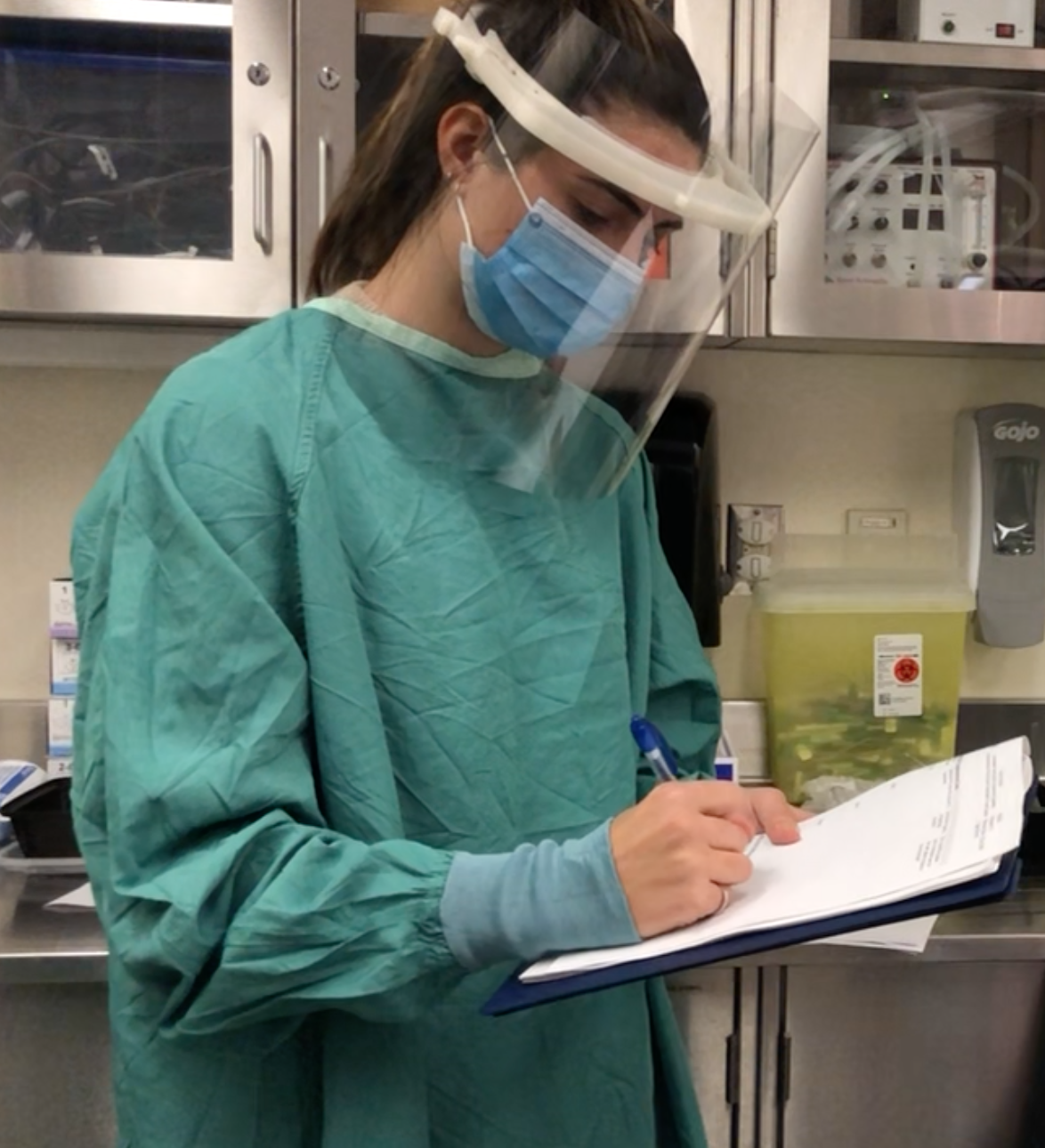
Me using the reusable face shield during a pre-clinical study for Xpan.
PROBLEM
“The chronic global shortage of personal protective equipment is now one of the most urgent threats to our collective ability to save lives.”
- World Health Organization Director-General Tedros Adhanom Ghebreyesusthe, March 27, 2020
With the supply chain issues for PPE during the initial stages of COVID-19, many healthcare workers were forced to re-use disposable face shields in their day to day practice. These shields were not being properly decontaminated before re-use, posing health and safety risks to healthcare workers.
The plastic, foam and elastic materials used in most of these shields are not designed to undergo standard sterilization methods (e.g. autoclave), they can easily scratch or crack and retain bacteria.
On top of this, there was no affordable 100% reusable face shield option available in Canada.
SOLUTION
A 100% Reusable, Regulatory-Compliant and Cost-Saving Face Shield for healthcare workers during COVID-19, which includes:
- A patent-pending, 3D printed, closed frame design with a one-size-fits all adjustable head strap
- A washable, foam-free, skin safe and pressure-relieving comfort band
- A sterilization-stable and scratch-free transparent visor
- A nanotechnology-based anti-fog spray formula (originally designed for U.S. Navy Seals but is now used by first responders nationwide)
The face shield is designed to be cycled 1000+ uses and comes to $0.50 USD or less per use.

End user wearing face shield and other PPE
PROCESS
For each of the face shield components, each Medical Maker owned a specific part of the design and development. Fellow Medical Maker, Erin Austen, led the frame & adjustable head strap 3D printed design and development. I focused on sourcing reusable materials including the plastic shield itself, the design and molding of the silicone comfort band, and created reprocessing instructions. Dr. Julielynn Wong led the shield cutting process, face shield assembly, disinfectant spray acquisition and in-clinic testing.
Due to the imminent need for reusable PPE, the entire design and manufacturing took place within a 2-month period.
1. Closed Frame & Adjustable Headstrap
Several iterations of the frame and headstrap were designed in AutoCAD by Erin and 3D printed with a semi-rigid and sterilizable material called ColorFabb nGen flex. Some of the major design requirements were: low weight, printable in 1-piece, adjustable strap that fits all head sizes, appropriate distance from frame to clear shield, ease of assembly, and more.
The final frame consisted of a hollowed out but solid front piece to prevent contamination above the eyes, and a wrap-around adjustable strap that would be tightened similarly to a belt.

Frame and headstrap FDM printer setup

3D printed frame and headstrap
2. Comfort Band
From my research, silicone is commonly used in medical devices and implantables, and ranges in hardness depending on application.
I needed to find a soft silicone with a low shore hardness that would be able to provide and sustain comfort for 8+ hours at a time, and also be able to mold it in a repeatable way. I experimented with several off-the-shelf silicone materials from Sculpture Supply. A 3D printed mold was developed where one could mix the silicone parts, pour it and let cure for ~4 hours. I faced some issues with air bubbles forming and required a vacuum de-gasser to preserve the mold structure.
Ecoflex 00-20 AF was found to be the most comfortable and repeatable to produce. See an example mold below:
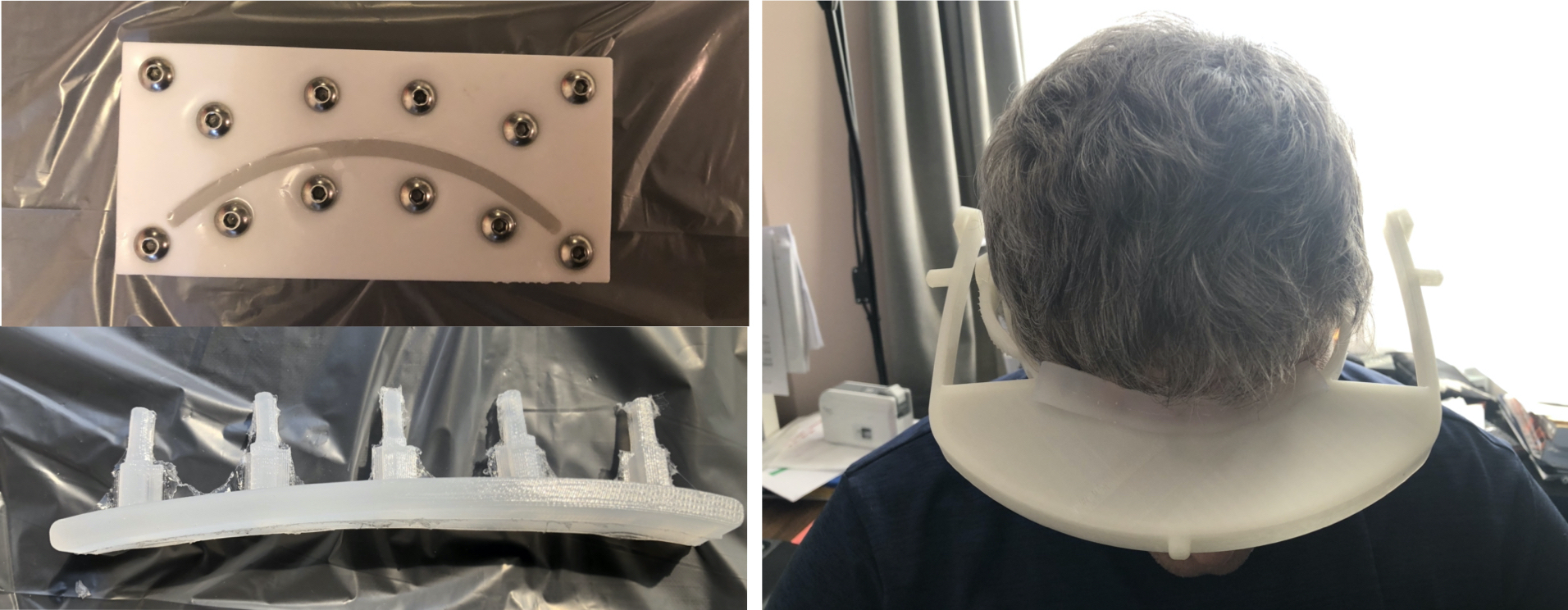
Comfort band mold and early prototype, and assembled onto frame
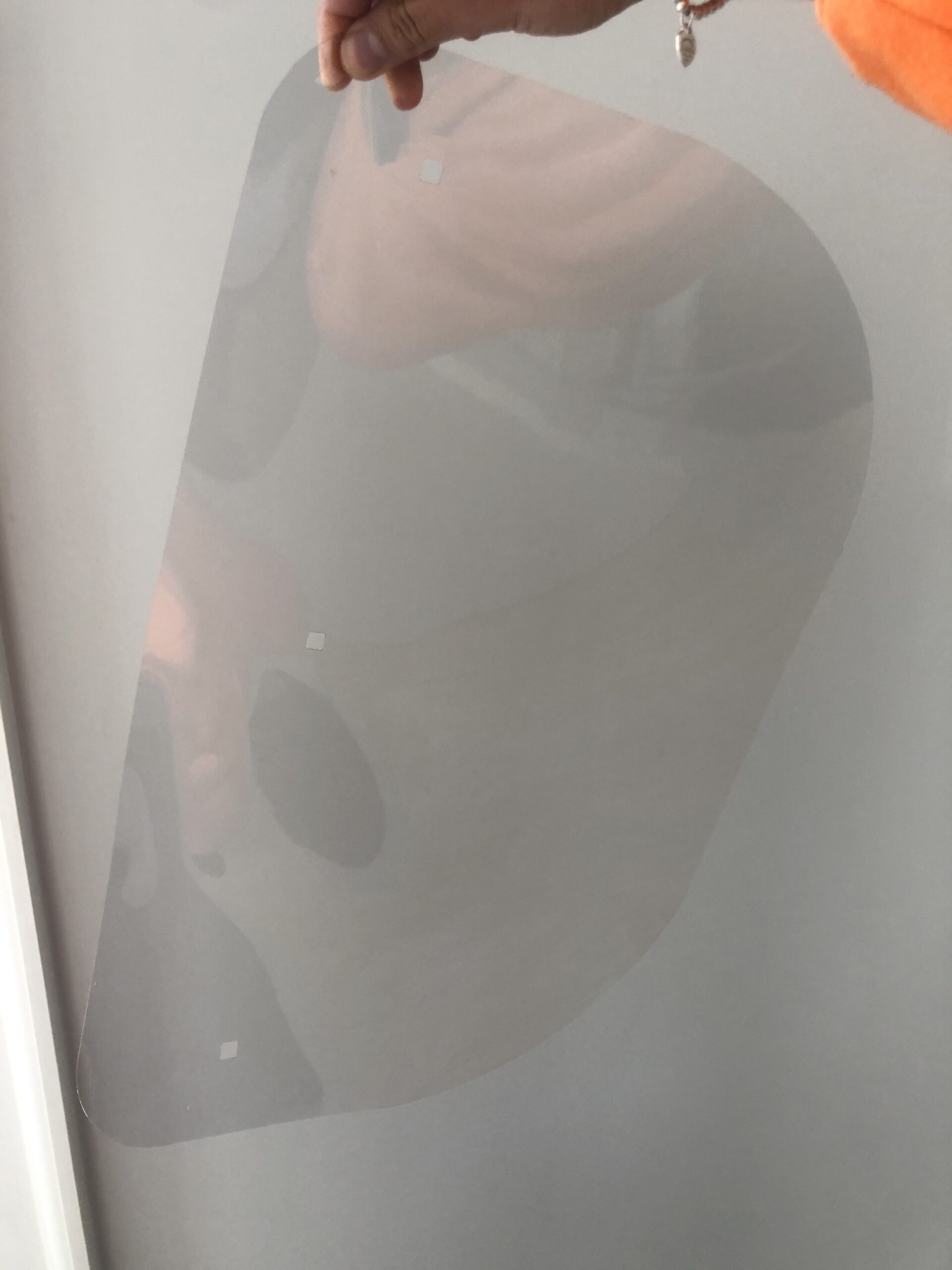
Transparent visor alone
3. Transparent Visor
Finding an inexpensive and 100% reusable visor material was a challenge, especially given the supply chain issue at the time. I considered materials such as polycarbonate, PPSU and PETG and created a matrix to compare their chemical resistance, sterilization method compatibility, scratch resistance, visibility, anti-fog properties and beyond.
I called several local suppliers of these materials and discussed feasibility and use within our application, and landed on a supplier of Radel (a brand of PPSU) which we ended up pursuing. While PPSU was the most expensive, it had the greatest chemical resistance, ability to withstand several sterilization methods the greatest light transmittance, and met ANSI regulatory standards.
Julielynn then used a die-cutter to cut the shields into the desired shape for the adjustable band that Erin had designed.
4. Anti-Fog Spray & Reprocessing Instructions
For a nurse caring for multiple patients within a day, it was important to be able to disinfect in between patients and prevent fog build-up. Julielynn sourced a local manufacturer that could develop a specific anti-fog disinfectant spray that would work best with the PPSU shield. It was combined with a microfibre cloth.
Although the shield was autoclave-able, not every clinic has an autoclave, and thus it was important that the shield could withstand other methods of sterilization. Since PPSU is sterilizable via bleach, I researched and developed instructions to reprocess the shield with a simple bleach solution.
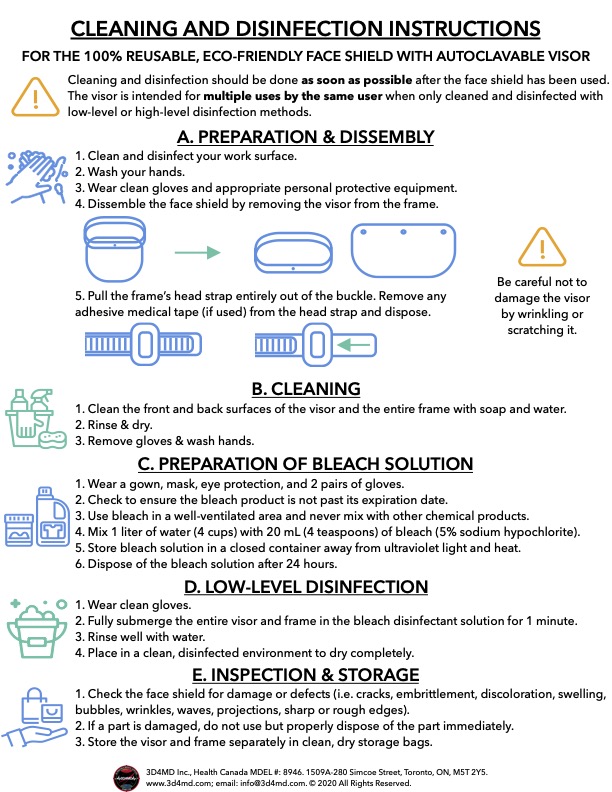
Reprocessing Instructions
Throughout the design process, several tests were conducted on prototypes including:
- User Fit: The face shield was tried on 15+ people with varying head sizes and shapes to determine whether the adjustable strap was truly a one-size fits all.
- Washing & Sterilization Durability: The face shield underwent several cycles of washing and sterilization to test the durability including home and industrial dishwasher and autoclave.
- Prolonged Time & Comfort: 10+ users (including myself) were asked to wear the face shield for an 8+ hour day to test the pressure-relieving comfort band.
OUTCOMES
Over 400+ 100% Reusable Face Shields were delivered for all the PGY-1 physician residents across the province of British Columbia in Canada, among 100's of others across the country. The solution is currently patent-pending.
To scale this solution, next steps would involve using contract manufacturers and suppliers to more efficiently cut shields and mold the comfort bands. Additionally, we would seek Health Canada and/or FDA regulatory clearance.
VIEW MY OTHER PROJECTS:

Xpan: A Less Invasive Surgical Access PortPhysical Products
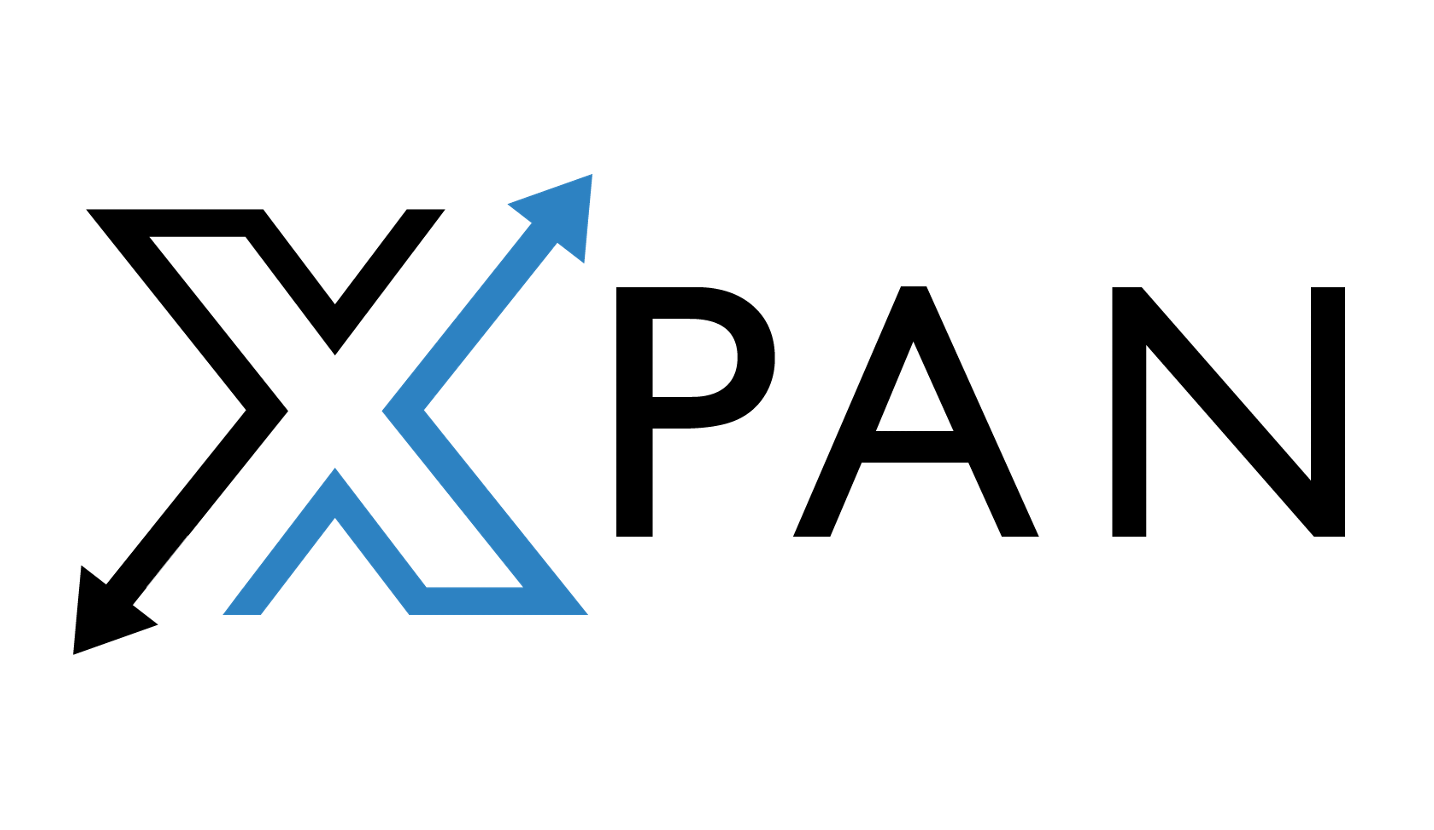
Xpan Brand Revitalization: Logo & Web DesignDigital Products

New Start Foundation: Logo & Web DesignDigital Products

Fino: A Youth Financial Education AppDigital Products
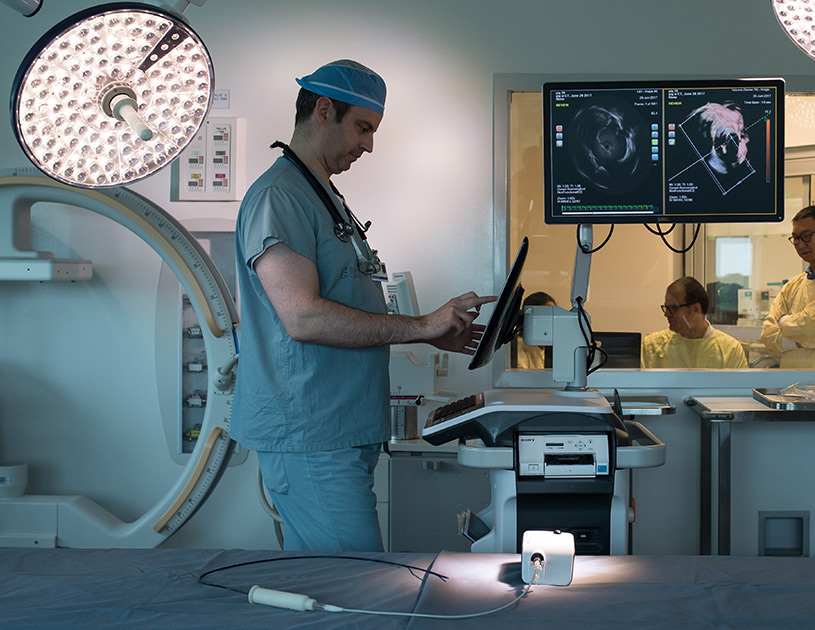
AR Needle Guidance System for Heart Fluid AspirationPhysical Products
